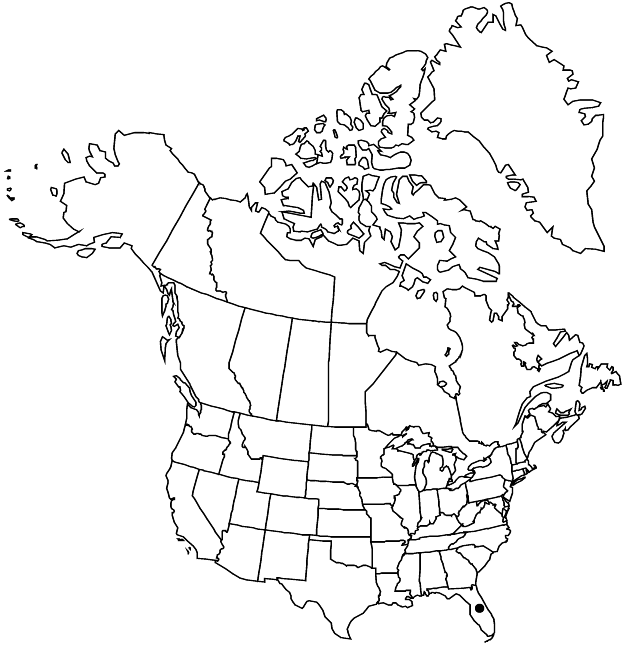Polygonella myriophylla
Brittonia 15: 196. 1963.
Subshrubs, perennial, synoecious, 2–20 dm. Stems prostrate, creeping, usually with branches that form dense mats, glabrous. Leaves persistent; ocrea margins not ciliate; blade clavate to spatulate, (1.5–) 2–8 (–8.5) × 0.4–0.9 mm, base attenuate, margins not hyaline, apex obtuse, glabrous. Inflorescences 5–9 (–13) mm; ocreola encircling rachis, only the base adnate to rachis, apex acute. Pedicels spreading in anthesis, spreading the reflexed in fruit, 0.7–1.9 mm, much longer than subtending ocreola. Flowers bisexual; outer tepals loosely appressed in anthesis, sometimes spreading in fruit, white, pink or yellow, often drying yellow, elliptic to oblong, 1.4–2.2 mm in anthesis, margins entire; inner tepals loosely appressed in anthesis and fruit, white, pink, or yellow, elliptic to suborbiculate, 1.7–2.5 mm in anthesis, margins entire; filaments dimorphic; anthers pink or yellow; styles and stigmas 0.4–0.9 mm in anthesis. Achenes mostly included, reddish-brown, 3-gonous, 2.2–3.4 × 1.6–2.4 mm, dull to shiny, minutely roughened. 2n = 36.
Phenology: Flowering Apr–Nov.
Habitat: Xeric, white sand in sand pine scrub
Elevation: 30-60 m
Discussion
Of conservation concern.
Polygonella myriophylla is restricted to 119 sand pine scrub sites in the Lake Wales, Lake Henry, and Winter Haven ridges of central peninsular Florida (S. P. Christman and W. S. Judd 1990). Loss of habitat to residential, commercial, and agricultural development is the most serious threat to this regional endemic.
Selected References
None.
Lower Taxa
"/2" is not declared as a valid unit of measurement for this property.
